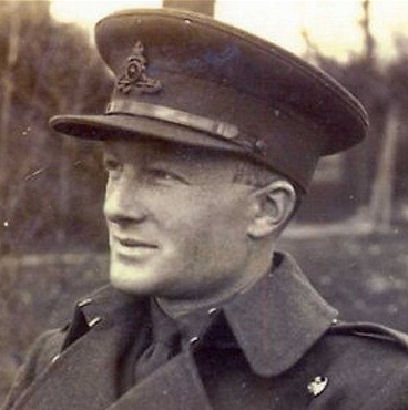

JACK SEWELL, MC - Obituary
From Diana Kennedy
This article was originally published in the April 2011 edition of Soul Search, the journal of The Sole Society
The following obituary appeared in the Daily Telegraph in February 2011. Diana Kennedy, the Sewell surname coordinator tells us something about his family at the end of the article:

On April 6 1945, Sewell was the captain of "A" Battery, 11th (Honourable Artillery Company) Regiment Royal Horse Artillery (11 HAC). The Battery was ordered to occupy a forward position opposite Cotignola on the River Senio where it could support the New Zealand Division.
Soon after dark Sewell was leading a petrol and ammunition convoy across a bridge to the Battery's position when the Germans opened up with a heavy and prolonged artillery bombardment. Many of the shells landed on the road and several of them set ammunition dumps ablaze – but Sewell pressed on.
As a result, the Battery's guns, tanks and vehicles were replenished that night. It was able to stand firm and it fired more than 1,000 rounds of high explosive in support of the New Zealanders' attack.
Then, in the final phase of the Italian Campaign, throughout the battle which began with the crossing of the Senio and ended with the breakthrough at Argenta, Sewell led battery advances on roads exposed to intense mortar, artillery fire and sniping. He carried out supply runs day and night for two weeks with very little sleep, ensuring guns and tanks in highly exposed positions had enough ammunition. The citation for his MC stated that his leadership had been an inspiration to all ranks.
John Alban Fane Sewell was born on September 20 1917 at Secunderabad where his father was in the Indian Imperial Police. He was educated at Eastbourne College before going up to Jesus College, Oxford, where he read Modern Languages and played rugby several times for the university.
After teaching for a spell at Merchant Taylors', he enlisted in the Royal Artillery and was posted to 11 HAC. In the Western Desert, his unit was among the first in the Eighth Army to be equipped with American self-propelling guns, which were mounted on tank chassis and known as a "Priests".
In September 1942 he was at Ruweisat Ridge in northern Egypt. When German spotter planes came over, he fired at them. Then, during the night, while he and his Regiment moved to another location, brushing out the marks left by their tank tracks, sappers busily built mock tanks out of timber and of El Alamein. He was frequently in the most precarious situations, directing the fire of his battery while under heavy shelling himself.
After several days of fierce fighting his battery was withdrawn for a short rest. He was examining German grenades of various types when a temperamental "Thermos" bomb on the other side of the bunker exploded. A comrade was killed and, as Sewell said afterwards, the enthusiasm for enemy "collectables" swiftly evaporated.
After the campaigns in North Africa and Sicily, Sewell landed in Italy with 11 HAC and finished the war in Trieste. He spent a year with the Allied Commission in Austria before being demobilised.
He joined British Petroleum and worked for the company in London, Hamburg and Nigeria. After retiring in the 1970s, he settled in Dorset and supported a number of charities. Jack Sewell died on January 22. He married, in 1946, Peggy Knight. She predeceased him and he is survived by their two sons and a daughter.
Diana Kennedy says, ‘He was a cousin of member Greta D'Albedyhll-Newman and also the brother of someone that my husband knows. Many of the family were born in India and were in the army. They are descended from Gen Sir William Henry Sewell (said to be the son of William 1V) but brought up by Robert Sewell an Attorney General of Jamaica, his father was Sir Thomas Sewell the Master of the Rolls 1764-1784.